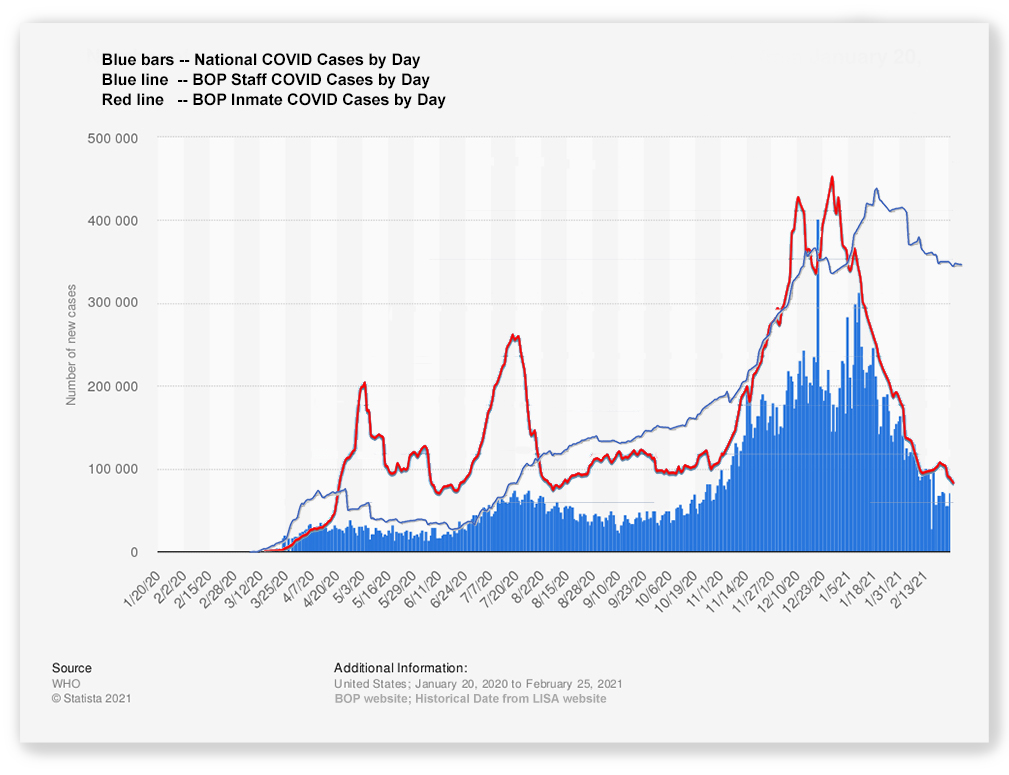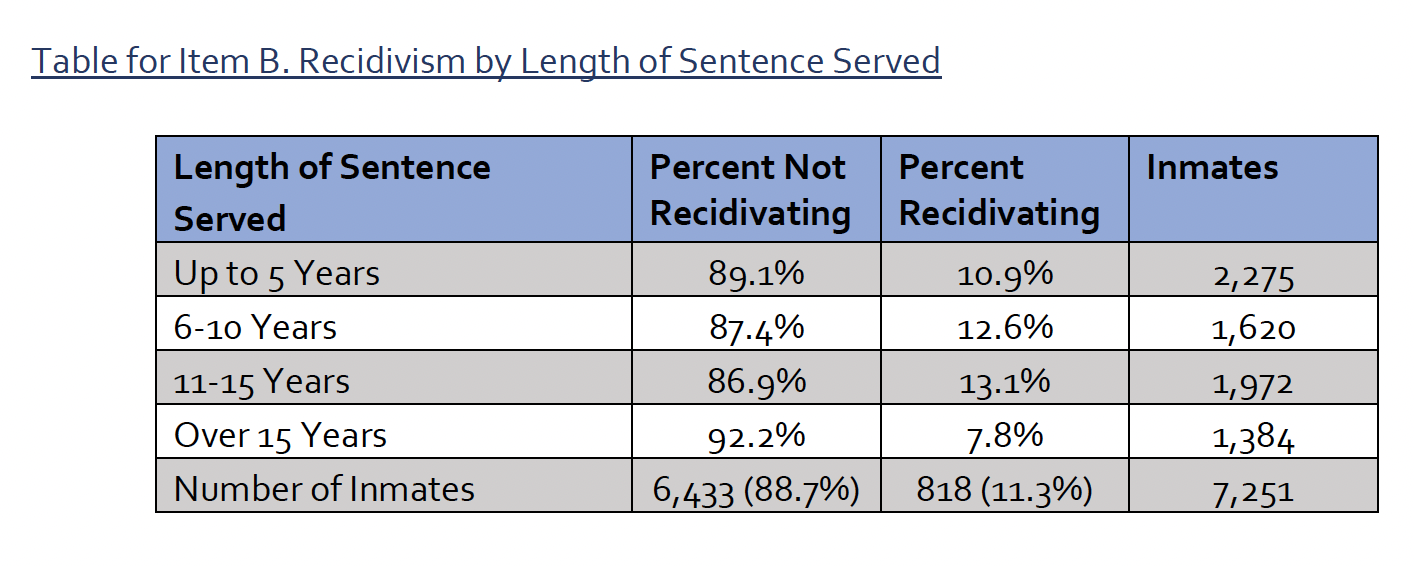We post news and comment on federal criminal justice issues, focused primarily on trial and post-conviction matters, legislative initiatives, and sentencing issues.

DUELING HOME CONFINEMENT MEMOS DRAW CRITICISM
A week ago, I wrote about a new Bureau of Prisons memo (which some said was really a Dept of Justice memo) expanding eligibility for CARES Act home confinement. I admitted that despite my efforts, I could not obtain a copy of it.
 I’m not alone. FAMM was scrambling, inmates were scrambling, and even Ohio State University law professor Doug Berman, the dean of federal sentencing law if there ever was one, complained in his Sentencing Law and Policy blog last Tuesday that the memo has still not been released. That same day, Keri Blakinger of The Marshall Project released what purported to be the text of the memo, a well-meant but ultimately unhelpful post.
I’m not alone. FAMM was scrambling, inmates were scrambling, and even Ohio State University law professor Doug Berman, the dean of federal sentencing law if there ever was one, complained in his Sentencing Law and Policy blog last Tuesday that the memo has still not been released. That same day, Keri Blakinger of The Marshall Project released what purported to be the text of the memo, a well-meant but ultimately unhelpful post.
Meanwhile, my email was smoking. Inmates heard that the BOP had been told to send minimum-security inmates home even if they had not served half of their sentence, the standard that people with prior offenses of violence were excluded had been dropped… the institutions were rife with rumors. People complained that their case managers were stubbornly ignoring the new standards, that wardens were releasing internal memos that underpromised.
You remember the game “post office.” The message was whispered around the circle of kids until it returned to the source mangled beyond recognition. That’s what we had. And the blame can be laid at the bureaucratic feet of the Bureau of Prisons, which would classify road signs as “sensitive” and “FOIA exempt” if the agency could get away with it.
Thankfully, Washington, D.C., leaks like a screen door on a submarine. By Then, on Thursday, both FAMM and the Defenders Services Office of the Administrative Office of U.S. Court (the support agency for Federal Public Defenders nationwide) had obtained bootlegged copies of the memo – an April 13 release from Andre Mateviousian, Assistant Director of the Correctional Services Division, BOP – and posted them on the Internet. These posts, which are identical, appear to be the real deal.
So what changed? A couple of things. First, inmates with -300 and -400 series disciplinary reports shots in the last 12 months are not automatically disqualified. Second, inmates with “low” PATTERN scores are now eligible for CARES Act home confinement.
 What didn’t change? At least a couple of things. First, if you have a prior conviction for a crime of violence (let’s say a bar fight back in 1985, when you were 21 years old and possessed a testosterone-addled brain), you are still disqualified from CARES Act home confinement (no matter that you’re doing 24 months for tearing the label off your mattress). Second, the BOP is adhering to its self-imposed standard that you have to have completed 50% of your sentence (or 25% of your sentence with less than 18 months to go).
What didn’t change? At least a couple of things. First, if you have a prior conviction for a crime of violence (let’s say a bar fight back in 1985, when you were 21 years old and possessed a testosterone-addled brain), you are still disqualified from CARES Act home confinement (no matter that you’re doing 24 months for tearing the label off your mattress). Second, the BOP is adhering to its self-imposed standard that you have to have completed 50% of your sentence (or 25% of your sentence with less than 18 months to go).
So the Marshall Project text was wrong: prior violence still counts. The versions of the memo posted by FAMM and fd.org continue to say that “the inmate’s current or a prior offense” cannot be “violent, a sex offense, or terrorism-related.”
At the end of last week. FAMM President Kevin Ring wrote to the BOP complaining about its failure to officially release the memo. “I am writing to ask that you publish on the Bureau of Prisons’ (BOP) website any and all memos sent to wardens about the eligibility criteria for CARES Act home confinement,” Ring wrote. “The BOP’s failure to do so has created unnecessary confusion and frustration for incarcerated people and their families…”
There is not a bureaucratic reason on God’s green earth why the BOP could not have released the memorandum on April 13, 2021. Instead, the agency’s obsession with secrecy (or at least playing its cards close to the vest) generated a week’s worth of heat without light. In fact, if the memo had not been leaked to outside organizations, inmates would still be in a tizzy and families still confused.
 While I am on a rant, I should note the moment in BOP Director Michael Carvajal’s testimony two weeks ago before the Senate Judiciary Committee that made me shout “liar!” at my computer screen. That in turn caused my faithful and efficient office dog Winnie to cower under a table until I calmed down.
While I am on a rant, I should note the moment in BOP Director Michael Carvajal’s testimony two weeks ago before the Senate Judiciary Committee that made me shout “liar!” at my computer screen. That in turn caused my faithful and efficient office dog Winnie to cower under a table until I calmed down.
As I note, the new memorandum retains the 50%-of-sentence requirement. This is a standard that Attorney General William Barr never imposed. Instead, as you may remember, it was the BOP’s own fiat, added in the agency’s all-too-typical ham-handed way (with inmates who were literally walking out the door to return home being called back because of the new requirement).
When I heard Carvajal assure the Senators that all the BOP had done was to apply the AG’s home confinement criteria, I was disgusted at his prevarication and furious that the Senators were so ill-prepared by their staffs that no one called Carvajal out on the fib.
In Forbes last week, Walter Pavlo noted it as well. He too observed that the time-served requirement was not dictated by the Attorney General, but rather was
based on an internal BOP memorandum that stated it was screening inmates based on whether they had served 25% of their sentence with less than 18 months remaining or have served more than 50% of their sentence. The directive had little logic behind it because COVID-19 did not discriminate between those who had been in prison years or those who had just arrived. The result of the memorandum was devastating, leading to deaths and infections at everyone of the BOP facilities nationwide.
 Testifying before the Senate Judiciary Committee two weeks ago, BOP Director Michael Carvajal said that “…any inmate that is eligible under the criteria presented to me by the Attorney General is on home confinement as we speak.” Pavlo called that misleading, noting that “what Carvajal failed to add were details of the internal memos that mandated that priority for a person’s transfer to home confinement be measured against the amount of time they had served…”
Testifying before the Senate Judiciary Committee two weeks ago, BOP Director Michael Carvajal said that “…any inmate that is eligible under the criteria presented to me by the Attorney General is on home confinement as we speak.” Pavlo called that misleading, noting that “what Carvajal failed to add were details of the internal memos that mandated that priority for a person’s transfer to home confinement be measured against the amount of time they had served…”
Carvajal’s statement was false then, and it is false now.
Sentencing Law and Policy, Why is DOJ apparently keeping hidden a new memo expanding the criteria for home confinement? (April 20, 2021)
The Marshall Project, Document Cloud, Home Confinement Memo (April 20, 2021)
FAMM, BOP Home Confinement Memorandum of April 13, 2021 (posted April 21, 2021)
Federal Public Defender, BOP Home Confinement Memorandum of April 13, 2021 (posted April 21, 2021)
Sentencing Law and Policy, FAMM urges federal BOP to publish memos with home confinement criteria (April 23, 2021)
Forbes, Bureau of Prisons Director Testimony To Senate Judiciary Leaves Unanswered Questions (April 20, 2021)
– Thomas L. Root
























